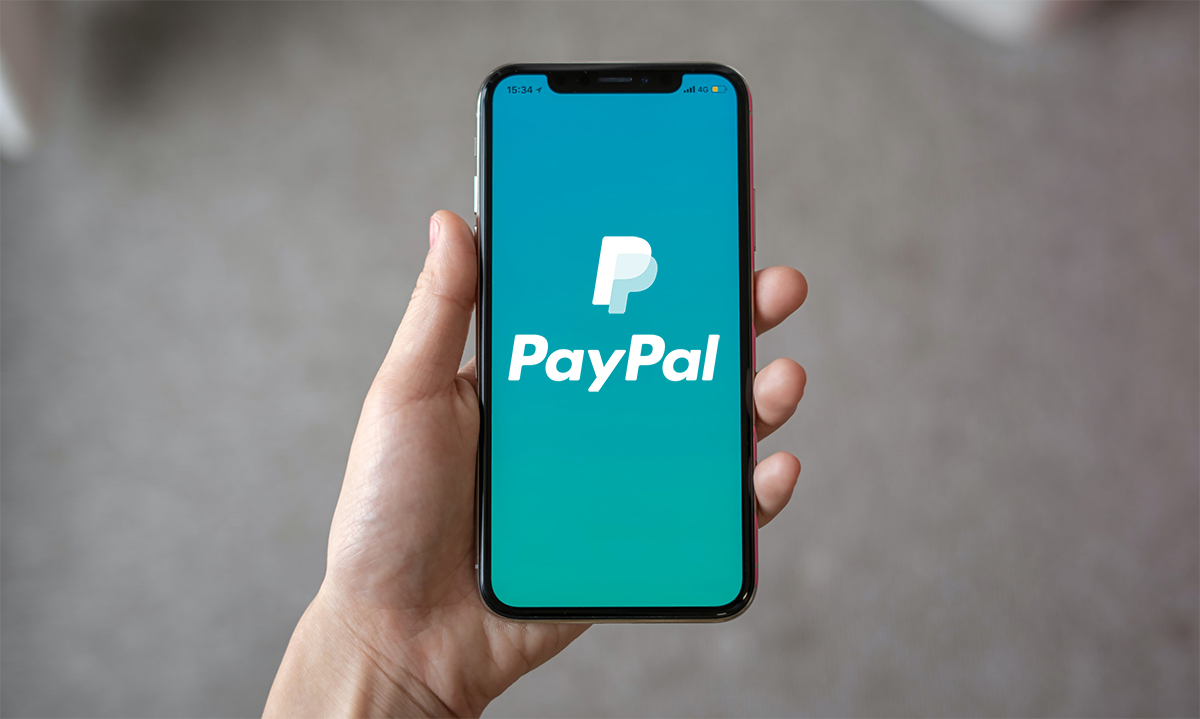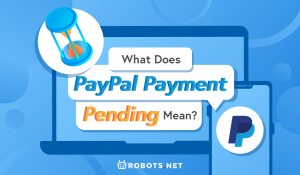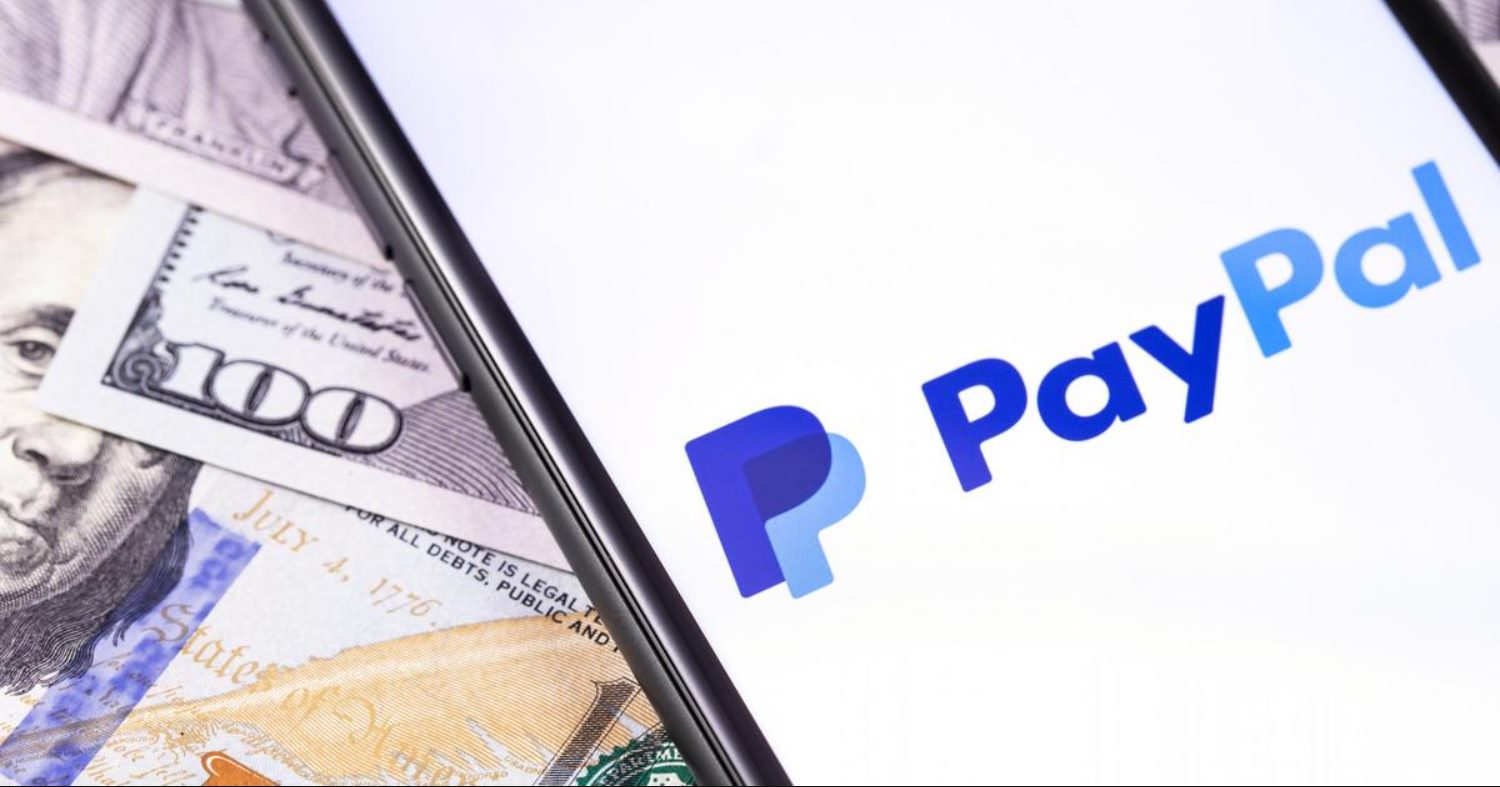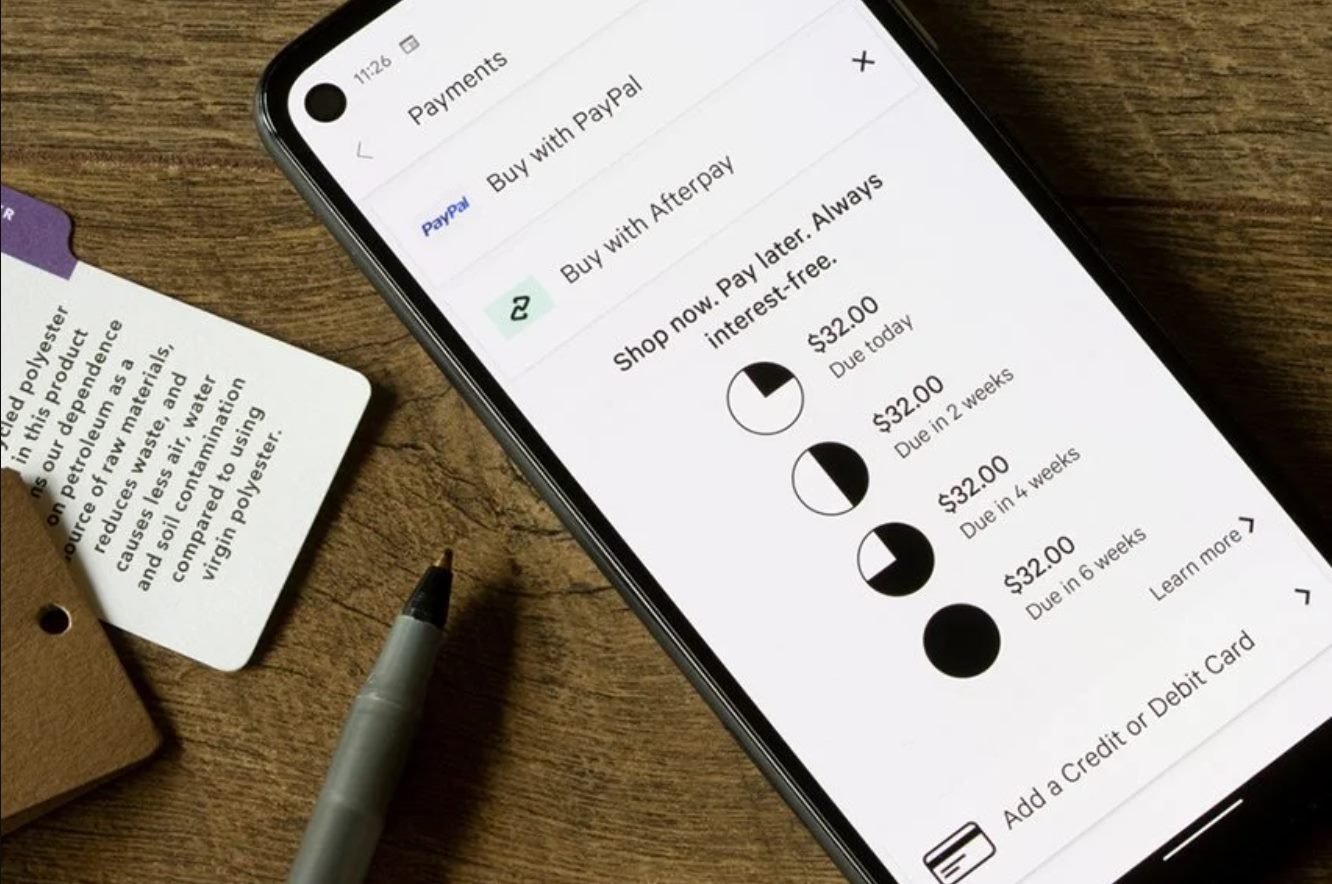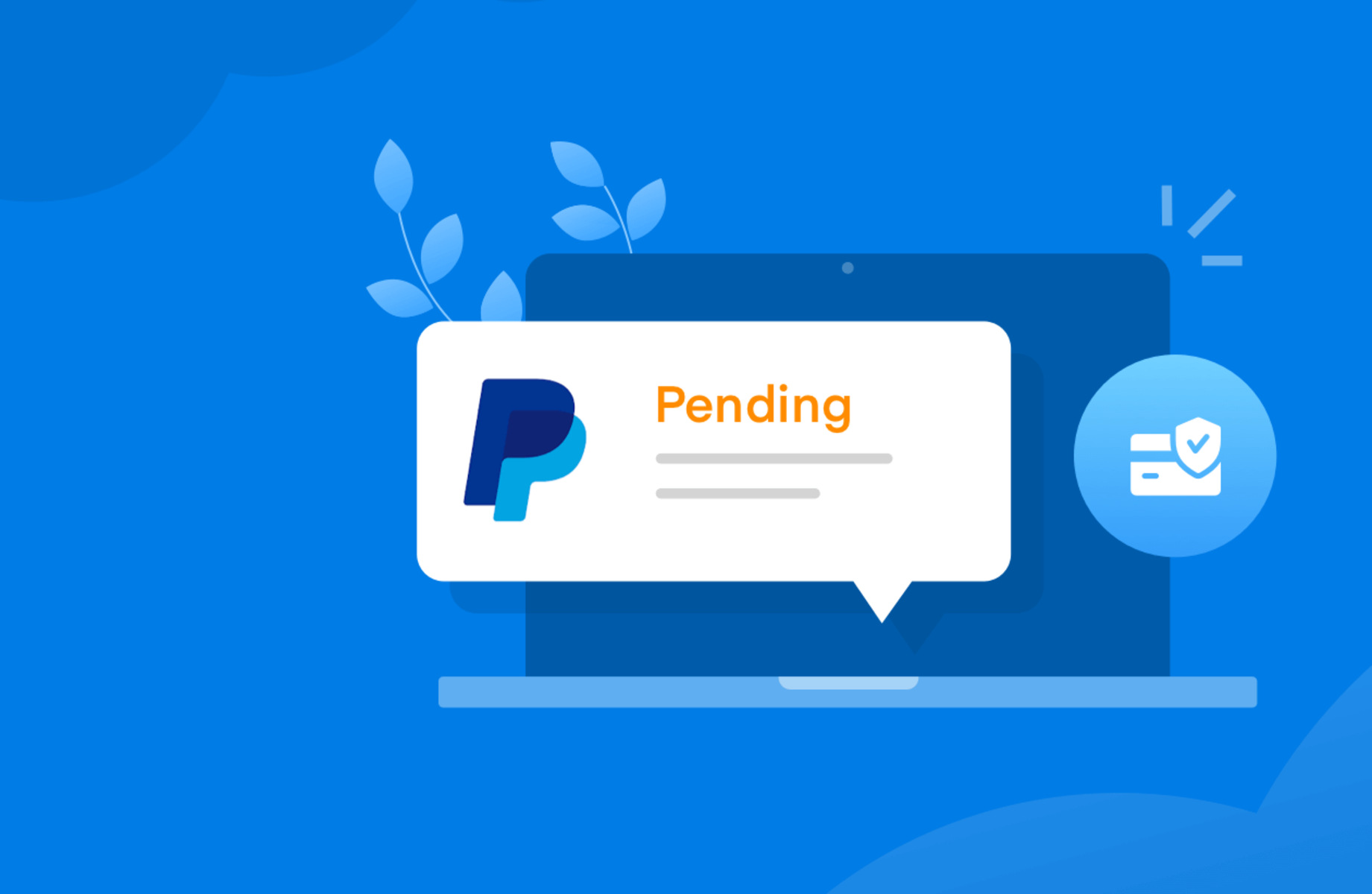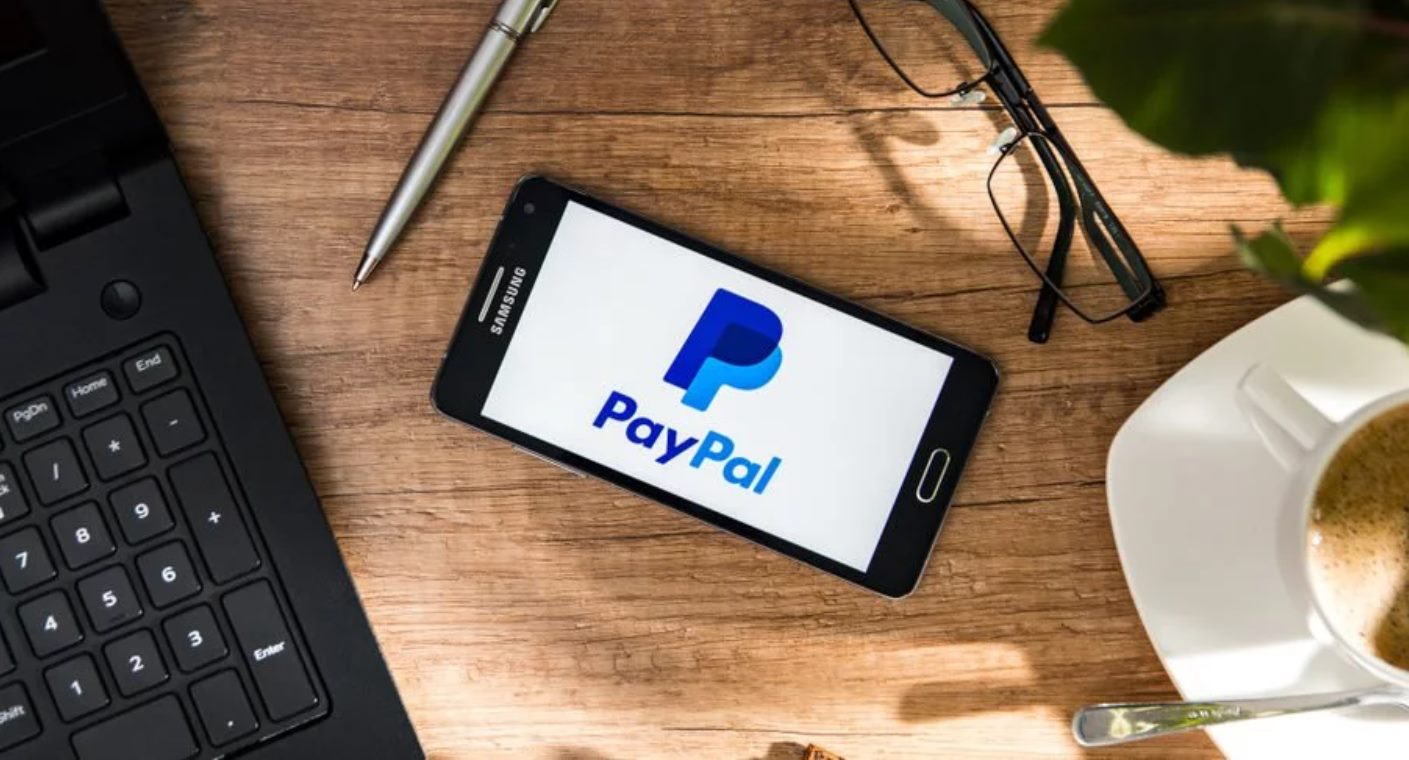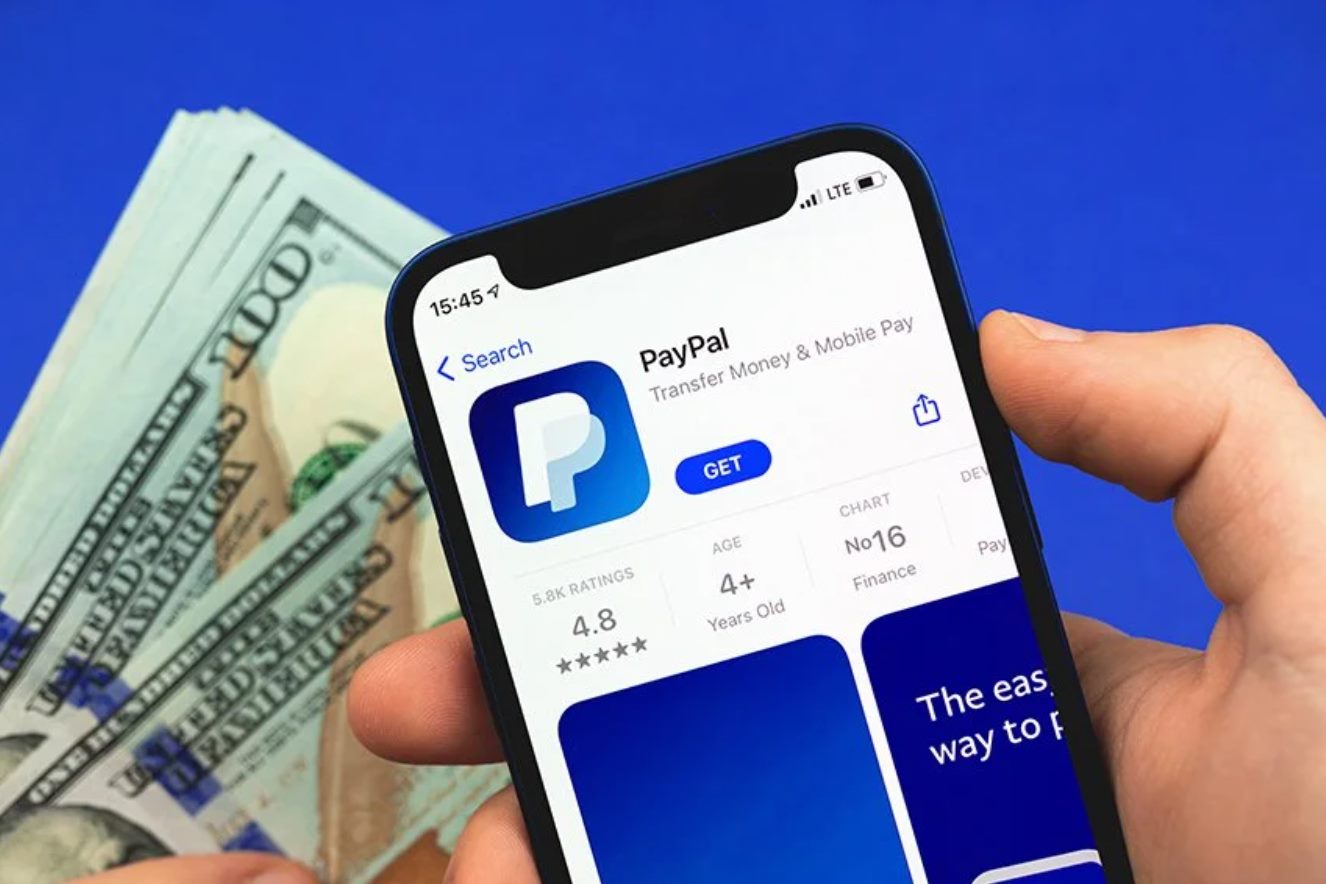Introduction
Welcome to the world of online payments! If you’re familiar with PayPal, you may have come across the term “Payment Pending” at some point. But what exactly does it mean? In this article, we will explore the concept of Payment Pending on PayPal and discuss the reasons why it may occur. Understanding these reasons will help you navigate any potential issues and ensure a smooth and hassle-free payment experience.
Payment Pending refers to a status that appears when a payment is still being processed by PayPal. It signifies that the transaction is not yet complete and that the funds have not been transferred. While it may initially cause some concern, Payment Pending is a relatively common occurrence and can happen for several reasons.
In the following sections, we will delve into the various factors that can result in Payment Pending on PayPal. We’ll cover topics such as account verification, the risk of fraudulent activity, insufficient funds, disputes or claims, and pending funds availability. By exploring these reasons, you’ll gain a deeper understanding of the potential causes behind Payment Pending.
Additionally, we will provide you with actionable steps to resolve Payment Pending issues. These steps will help you confirm account verification, address fraudulent activity concerns, ensure sufficient funds in your account, handle disputes or claims, and understand how to patiently wait for funds to become available. By following these recommendations, you can proactively resolve Payment Pending situations and avoid any unnecessary complications.
So, if you’ve ever encountered a Payment Pending status on PayPal, or if you want to be prepared for any future occurrences, continue reading to learn more about the specific reasons behind it and how to effectively navigate the situation.
Definition of Payment Pending
Before we delve into the reasons why a payment may be labeled as “Payment Pending” on PayPal, let’s first establish a clear definition of what this status entails.
Payment Pending refers to the stage in the payment process where a transaction is still being processed by PayPal and has not yet been completed. During this time, the funds associated with the payment have not been transferred to the recipient.
When a payment is in the Pending status, it means that there are certain factors or criteria that need to be met before the transaction can be successfully finalized. These factors can vary and are typically dependent on several aspects, such as account verification, risk assessment, funds availability, and any potential disputes or claims that may have arisen.
During the Payment Pending period, the sender and recipient of the payment will receive notifications and updates from PayPal regarding the status of the transaction. Although it may create some uncertainty or anticipation, it is important to understand that Payment Pending is a temporary status and the funds will either be transferred successfully or the issue will be resolved, ensuring a smooth payment process.
It’s also worth noting that the duration of the Payment Pending status can vary depending on the specific circumstances surrounding the transaction. In some cases, it may be resolved within a few hours, while in others, it may take several days for the payment to be finalized.
Now that we have a clear understanding of what Payment Pending means, let’s explore the reasons why it may occur and how to address them effectively.
Reasons for Payment Pending on PayPal
There are several reasons why a payment may be labeled as “Payment Pending” on PayPal. Understanding these reasons will help you navigate the situation and take appropriate action to resolve any potential issues. Let’s explore the most common factors that can result in a Payment Pending status:
- Account Verification: In some cases, PayPal may require additional verification to ensure the security and validity of the transaction. This can involve confirming personal details, linking a bank account or credit card to your PayPal account, or providing additional documentation. Until the necessary verification process is completed, the payment may remain in a Pending status.
- Risk of Fraudulent Activity: PayPal has robust fraud prevention measures in place to protect its users. If a transaction is flagged as potentially high-risk, PayPal may initiate additional security checks and investigations. This can result in a Payment Pending status until the risk is mitigated or confirmed.
- Insufficient Funds: If the sender’s PayPal account does not have enough funds to cover the payment, it will result in a Payment Pending status. In this case, the sender will need to add funds to their account or link a backup funding source to complete the transaction.
- Dispute or Claim: If there is a dispute or claim filed by either the sender or recipient of the payment, PayPal may initiate an investigation process to resolve the issue. During this time, the payment may be placed on hold, resulting in a Payment Pending status.
- Pending Funds Availability: For certain transactions, especially those involving potential risks or large amounts, PayPal may place a temporary hold on the funds. This can happen when you receive payments from new or unverified buyers, or for transactions that are outside of your normal activity pattern. The payment will remain in a Pending status until the funds are cleared and become available for use.
These are the primary reasons why a payment may be labeled as Payment Pending on PayPal. It is important to remember that while it can be frustrating, especially when you are eager for a transaction to complete, the Pending status is ultimately in place to ensure the security and smooth processing of payments.
In the following sections, we will explore how to resolve Payment Pending issues for each of these specific reasons, providing you with actionable steps to take to address the situation effectively.
Account Verification
One of the common reasons for a Payment Pending status on PayPal is the need for account verification. This additional step is part of PayPal’s security measures to ensure the legitimacy of transactions and protect users from potential fraud.
When PayPal requests account verification, it means that they need to confirm the details provided during the account setup process. This can include verifying personal information, linking a bank account or credit card to your PayPal account, or providing additional documentation to confirm your identity.
To resolve a Payment Pending issue related to account verification, follow these steps:
- Log in to your PayPal account and check if there are any messages or notifications regarding the verification process.
- Complete any requested steps or actions to verify your account. This may include providing additional information, uploading requested documents, or confirming your email address or phone number.
- Ensure that all the information provided matches the details on your PayPal account and is accurate and up to date.
- Monitor your email inbox and PayPal account for any further instructions or updates regarding the verification process.
- If you have completed the verification process but the Payment Pending status persists, contact PayPal customer support for further assistance. They will be able to provide you with specific guidance and resolve any underlying issues preventing the completion of the payment.
By following these steps and efficiently completing the account verification process, you can resolve the Payment Pending issue and ensure that your transactions on PayPal progress smoothly.
Risk of Fraudulent Activity
PayPal takes the security of its users seriously and has robust measures in place to detect and prevent fraudulent activity. If a payment is flagged as potentially high-risk, it may result in a Payment Pending status. This allows PayPal to conduct additional security checks and investigations to ensure the legitimacy of the transaction.
To address Payment Pending issues related to the risk of fraudulent activity, follow these steps:
- Check your PayPal account and email for any notifications or messages from PayPal regarding the suspected fraudulent activity. It is important to review and respond to these messages promptly.
- If PayPal requests any additional information or documentation to validate the transaction, provide the necessary details as quickly as possible. This may include confirming the identity of the sender or recipient, providing proof of the transaction, or providing any other requested documents.
- Cooperate fully with PayPal’s investigation process. Respond to any inquiries or requests for information promptly and provide accurate and truthful responses.
- Monitor your PayPal account for any updates on the investigation and any further instructions from PayPal.
- If the Payment Pending status persists despite your cooperation, contact PayPal customer support for further assistance. They will be able to provide you with specific guidance and help resolve the underlying concerns related to the risk of fraudulent activity.
By following these steps and actively cooperating with PayPal’s investigation process, you can effectively address Payment Pending issues associated with the risk of fraudulent activity. This ensures that your transactions are conducted securely and that any potential fraudulent activity is identified and prevented.
Insufficient Funds
An insufficient balance in your PayPal account is a common reason for a Payment Pending status. If the sender does not have enough funds in their PayPal account to cover the payment, it will result in a Payment Pending status until the necessary funds are available.
To address Payment Pending issues related to insufficient funds, consider the following steps:
- Check your PayPal account balance to confirm that it is indeed insufficient to cover the payment. Keep in mind that any pending transactions or holds on your account can affect the available balance.
- Ensure that you have linked a backup funding source, such as a bank account or credit card, to your PayPal account. This will allow PayPal to automatically use these funds to complete the transaction if your PayPal balance is insufficient.
- If you haven’t linked a backup funding source, log in to your PayPal account and navigate to the “Wallet” section. From there, you can add and link a bank account or credit card to ensure sufficient funds are available for future transactions.
- Consider adding funds to your PayPal account. You can do this by transferring money from a linked bank account or requesting funds from another PayPal user. Once your PayPal account has a sufficient balance, the Payment Pending status should be resolved.
- If you have taken the necessary steps to resolve the insufficient funds issue, but the Payment Pending status persists, contact PayPal customer support for further assistance. They will be able to provide you with specific guidance and help resolve any underlying issues that may be preventing the completion of the payment.
By following these steps and ensuring that there are sufficient funds available in your PayPal account or linked backup funding sources, you can effectively address Payment Pending issues caused by insufficient funds. This will help ensure smooth and successful transactions on PayPal.
Dispute or Claim
Disputes or claims filed by either the sender or recipient of a payment can result in a Payment Pending status on PayPal. When a dispute or claim is raised, PayPal initiates an investigation process to determine the resolution and protect the interests of both parties involved.
To address Payment Pending issues related to disputes or claims, consider the following steps:
- Check your PayPal account and email for any notifications or messages regarding the dispute or claim. It is important to review and respond to these messages promptly in order to provide the necessary information that PayPal requires.
- Read the details of the dispute or claim carefully and gather any evidence or supporting documentation that can help clarify the situation and support your position.
- Respond to the dispute or claim through the PayPal Resolution Center. Provide a clear and detailed explanation of your position along with any evidence you have collected. Be sure to respond within the given timeframe to avoid any negative consequences.
- Cooperate fully with PayPal’s investigation process. Be prepared to provide any additional information or respond to any further inquiries from PayPal regarding the dispute or claim.
- Monitor your PayPal account and email for updates on the status of the dispute or claim. PayPal will communicate any decisions or resolutions through these channels.
- If the Payment Pending status persists despite your cooperation, or if you have further questions or concerns, contact PayPal customer support for assistance. They will be able to provide guidance throughout the dispute or claim resolution process.
By following these steps and actively participating in PayPal’s dispute or claim resolution process, you can effectively address Payment Pending issues related to disputes or claims. This ensures that any conflicts or issues are properly addressed and resolved, promoting a fair and secure transaction environment on PayPal.
Pending Funds Availability
PayPal may place a temporary hold on funds for certain transactions, resulting in a Payment Pending status. This is done to manage potential risks associated with new or unverified buyers, high-value transactions, or unusual activity patterns. The funds are held until they can be cleared and made available for use.
To address Payment Pending issues related to pending funds availability, consider the following steps:
- Check your PayPal account and email for any notifications or messages regarding the pending funds. PayPal will typically provide information on the reason for the hold and the estimated timeframe for the funds to become available.
- Review the specific requirements or conditions for the release of the funds. This may include confirming delivery of the item or service, providing valid tracking information, or waiting for a specific timeframe to elapse.
- Ensure that you have fulfilled all the necessary requirements or conditions. For example, if the release of funds is contingent upon confirming delivery, make sure to update the transaction status with valid tracking information.
- Monitor your PayPal account for any updates on the status of the pending funds. PayPal will communicate any changes or releases of funds through your account or email.
- If the Payment Pending status persists beyond the expected timeframe or if you have further questions or concerns, contact PayPal customer support for assistance. They will be able to provide specific guidance and help facilitate the release of the funds.
By following these steps and ensuring that you meet the requirements or conditions for the release of pending funds, you can effectively address Payment Pending issues related to pending funds availability. This ensures that your funds are eventually made available for use and allows for a seamless transaction experience on PayPal.
How to Resolve Payment Pending Issues
Encountering a Payment Pending status on PayPal can be frustrating, but there are steps you can take to address and resolve these issues. Follow the guidelines below to navigate through potential Payment Pending situations:
- Confirming Account Verification: If account verification is required, check for any messages or notifications from PayPal and complete any requested verification steps. Ensure that the information provided matches your PayPal account and respond promptly to any further instructions or inquiries from PayPal.
- Resolving Issues with Fraud Prevention: If there is a risk of fraudulent activity associated with the payment, review any notifications or messages from PayPal regarding the suspected fraud. Provide any additional information or documentation requested by PayPal, cooperate with their investigation process, and monitor your account for updates on the status of the investigation.
- Ensuring Sufficient Funds in Your Account: Check your PayPal account balance and link a backup funding source, such as a bank account or credit card, if necessary. Consider adding funds to your account if there is an insufficient balance. This will ensure that you have enough funds to cover the payment and resolve the Payment Pending status.
- Addressing Disputes or Claims: If a dispute or claim has been filed, review the details carefully and gather any supporting evidence. Respond to the dispute or claim through the PayPal Resolution Center, providing a clear explanation of your position and cooperating fully with PayPal’s investigation process. Monitor your account for updates on the status of the dispute or claim.
- Waiting for Funds to Become Available: Should there be a temporary hold on funds, follow any instructions provided by PayPal for the release of the funds. This may include confirming delivery of goods or services or waiting for a specific timeframe to elapse. Fulfill all requirements or conditions and monitor your account for updates on the availability of the funds.
If you have taken the necessary steps to resolve the Payment Pending issue but still encounter difficulties, contact PayPal customer support for further assistance. They will provide you with specific guidance and help resolve any underlying issues preventing the completion of the payment.
By following these recommended steps and actively addressing the specific reasons behind Payment Pending, you can successfully navigate through any payment issues on PayPal, ensuring a smooth and seamless payment experience.
Confirming Account Verification
Account verification is an essential aspect of using PayPal to ensure the security and validity of transactions. If your payment is marked as Payment Pending due to account verification, it means that PayPal requires additional information or verification to confirm the authenticity of your account and the transaction.
To resolve Payment Pending issues related to account verification, follow these steps:
- Check your PayPal account for any notifications or messages regarding the verification process. PayPal usually provides specific instructions on the required steps to verify your account.
- Complete the necessary verification steps as prompted by PayPal. This may involve confirming personal information, linking a bank account or credit card, or providing additional documentation to prove your identity.
- Ensure that all the information provided is accurate and matches the details on your PayPal account. Inaccurate information can result in delays or further complications.
- Monitor your email inbox and PayPal account for any further instructions or updates regarding the verification process. PayPal may request additional information or documents to verify specific aspects of the transaction.
- If you have completed the verification process but the Payment Pending status persists, it is advisable to contact PayPal customer support. They will be able to investigate and provide guidance on the specific issue causing the delay.
By following these steps and promptly completing the necessary account verification requirements, you can effectively resolve Payment Pending issues related to account verification on PayPal. Ensuring that your account is verified helps maintain the security of your transactions and prevents potential fraudulent activity.
Resolving Issues with Fraud Prevention
Fraud prevention is a top priority for PayPal, and as a result, certain transactions may be flagged for additional security checks. If your payment is marked as Payment Pending due to the risk of fraudulent activity, it is crucial to address these concerns to ensure the safety and integrity of the transaction.
To resolve Payment Pending issues related to fraud prevention, follow these steps:
- Check your PayPal account and email for any notifications or messages from PayPal regarding the suspected fraudulent activity. Take the time to carefully review the details provided.
- If PayPal requests additional information or documentation to validate the transaction, promptly provide the necessary details. This could include confirming your identity, providing proof of the transaction, or any other requested documentation related to the purchase.
- Cooperate fully with PayPal’s investigation process. Respond to any inquiries or requests for information promptly and provide accurate and truthful responses. It is essential to provide any evidence that supports the legitimacy of your transaction.
- Monitor your PayPal account for updates on the status of the investigation. PayPal will communicate any updates or decisions regarding the suspected fraudulent activity through your account or email.
- If the Payment Pending status persists despite your cooperation, or if you have further questions or concerns, it is recommended to contact PayPal customer support. They have the expertise to provide guidance and further assistance in resolving the underlying issues related to the risk of fraudulent activity.
By following these steps and actively cooperating with PayPal’s investigation process, you can effectively address Payment Pending issues associated with fraud prevention. This helps ensure the security of your transactions and prevents any potential fraudulent activity from occurring.
Ensuring Sufficient Funds in Your Account
One of the common reasons for a Payment Pending status on PayPal is having an insufficient balance in your account to cover the payment. It is important to ensure that you have enough funds in your PayPal account or linked backup funding sources to complete the transaction.
To address Payment Pending issues related to insufficient funds, consider the following steps:
- Check your PayPal account balance to confirm if it is indeed insufficient to cover the payment. Take into account any pending transactions or holds on your account that may affect the available balance.
- Make sure that you have linked a backup funding source, such as a bank account or credit card, to your PayPal account. This will allow PayPal to automatically use these funds if your PayPal balance is insufficient.
- If you haven’t linked a backup funding source, log in to your PayPal account and navigate to the “Wallet” section. From there, you can add and link a bank account or credit card to ensure sufficient funds are available for future transactions.
- Consider adding funds to your PayPal account. You can do this by transferring money from a linked bank account or requesting funds from another PayPal user. Once your PayPal account has a sufficient balance, the Payment Pending status should be resolved.
- If you have taken the necessary steps to resolve the insufficient funds issue, but the Payment Pending status persists, contact PayPal customer support. They will be able to provide specific guidance and help resolve any underlying issues that may be preventing the completion of the payment.
By following these steps and ensuring that there are sufficient funds available in your PayPal account or linked backup funding sources, you can effectively address Payment Pending issues related to insufficient funds. This will help ensure smooth and successful transactions on PayPal.
Addressing Disputes or Claims
If a dispute or claim has been filed regarding a payment, it can result in a Payment Pending status on PayPal. Resolving these disputes or claims is crucial to ensuring a fair and satisfactory resolution for both parties involved in the transaction.
To address Payment Pending issues related to disputes or claims, consider the following steps:
- Review any notifications or messages you have received from PayPal regarding the dispute or claim. It is important to carefully examine the details provided to understand the nature of the issue and the specific concerns raised.
- Gather any supporting evidence or documentation that can clarify the situation and support your position. This might include communication records, receipts, or any other relevant information regarding the transaction.
- Respond to the dispute or claim through the PayPal Resolution Center. Provide a clear and detailed explanation of your position, addressing all the points and concerns raised. Make sure to include any supporting evidence you have collected.
- Cooperate fully with PayPal’s investigation process. Respond to any inquiries or requests for information promptly and provide accurate and truthful responses. Be prepared to provide any additional evidence or clarification if requested by PayPal.
- Monitor your PayPal account for updates on the status of the dispute or claim. PayPal will communicate any decisions or resolutions through your account or email.
- If the Payment Pending status persists despite your cooperation, or if you have further questions or concerns, it is advisable to contact PayPal customer support. They have the expertise to guide you through the dispute or claim resolution process and provide further assistance if needed.
By following these steps and actively engaging in PayPal’s dispute or claim resolution process, you can effectively address Payment Pending issues. This ensures that any conflicts or issues are properly addressed and resolved, promoting a fair and secure transaction environment on PayPal.
Waiting for Funds to Become Available
Sometimes, PayPal may place a temporary hold on funds, resulting in a Payment Pending status. This hold can be triggered by various factors such as new or unverified buyers, high-value transactions, or unusual activity patterns. The funds are held until PayPal can verify the transaction’s legitimacy and ensure the security of the payment.
To address Payment Pending issues related to pending funds availability, follow these steps:
- Check your PayPal account and email for any notifications or messages regarding the pending funds. PayPal will typically provide information on the reason for the hold and the estimated timeframe for the funds to become available.
- Review the specific requirements or conditions for the release of the funds. This may include confirming delivery of goods or services, providing valid tracking information for shipped items, or waiting for a specified timeframe to elapse.
- Ensure that you have fulfilled all the necessary requirements or conditions. For example, if the release of funds is contingent upon confirming delivery, make sure to update the transaction status with valid tracking information as soon as it becomes available.
- Monitor your PayPal account for any updates on the status of the pending funds. PayPal will communicate any changes or releases of funds through your account or email.
- If the Payment Pending status persists beyond the expected timeframe or if you have further questions or concerns, it is recommended to contact PayPal customer support. They have the expertise to provide specific guidance and help facilitate the release of the funds.
By following these steps and ensuring that you meet the requirements or conditions for the release of pending funds, you can effectively address Payment Pending issues. This will help ensure that the funds are eventually made available for use, allowing for a smooth and seamless transaction experience on PayPal.
Conclusion
Encountering a Payment Pending status on PayPal can be a cause for concern, but by understanding the underlying reasons and knowing how to address them, you can navigate through these issues with confidence. From account verification to fraud prevention, insufficient funds to disputes or claims, and pending funds availability, each situation requires specific steps to resolve the Payment Pending status.
Confirming account verification, resolving issues with fraud prevention, ensuring sufficient funds, addressing disputes or claims, and waiting for funds to become available are all key steps to take when faced with a Payment Pending status on PayPal. By following these steps and cooperating with PayPal’s processes, you can effectively resolve any underlying concerns and ensure the smooth completion of your transactions.
Remember to closely monitor your PayPal account and email for any notifications or updates regarding the Payment Pending status. Promptly respond to any requests for information or verification, and provide any necessary documentation or evidence to support your case. If you encounter any difficulties or have further questions, reaching out to PayPal customer support is a valuable resource to assist you throughout the resolution process.
Ultimately, understanding and successfully resolving Payment Pending issues on PayPal will help to maintain the security, reliability, and integrity of online transactions. By taking the necessary steps, you can ensure a seamless payment experience and continue to enjoy the convenience and benefits of using PayPal for your online financial transactions.







